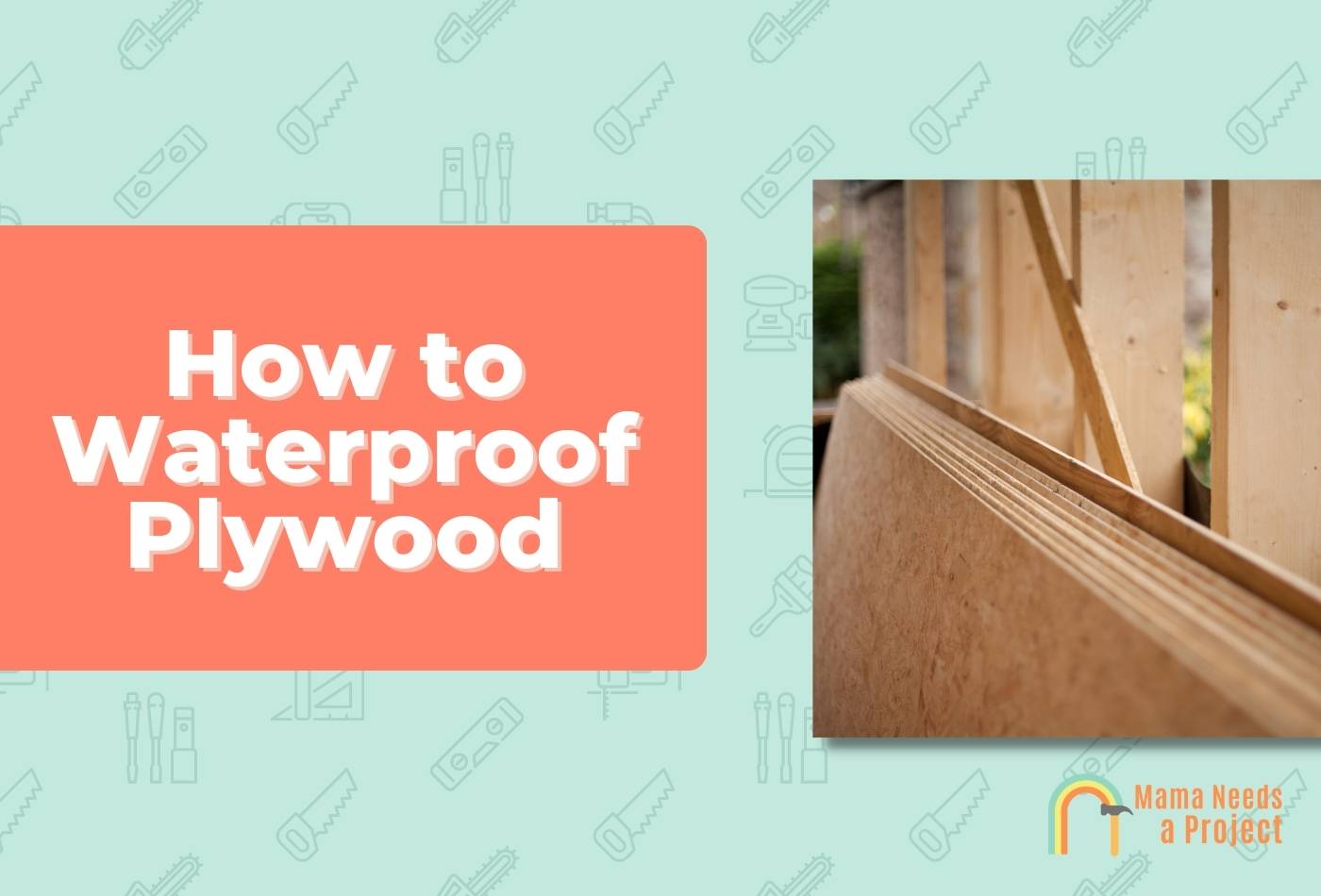How To Waterproof Plywood (7+ EASY Ways in 2024)
Plywood has become a staple building material because it’s stable, impact-resistant, and sturdy despite its relative thinness – not to mention how affordable it is.
However, even extremely durable plywood can become weak, especially when moisture comes into play.
Luckily, waterproofing plywood is easier than you think.
In this post, I’ll explore how to waterproof plywood, some tips to creating water resistant plywood, and much more. Let’s get started!
Some of the best ways to waterproof plywood include:
- Using a waterproof paint or stain
- Using plastic sheeting to enforce a weatherproof barrier
- Applying liquid latex or an epoxy sealant
7 Best Ways To Waterproof Plywood
There are many different materials you can use to seal plywood, including simple plastic sheeting and epoxy sealant.
It’s best to use a sealing method that will adequately address your needs; each of these methods has upsides and downsides, yet each one can be a great option for the right purpose.
1. Plastic Sheeting
If you’re not placing plywood on walls or another visible space, one of the easiest waterproofing strategies you could pursue is wrapping the plywood in plastic sheeting.
Plastic sheeting is far from the most visually attractive option, and if used in a visible area it could make your home or business seem like a scene out of American Psycho.
But if you’re using plywood as an underlayment for a basement floor, plastic sheeting can protect your plywood from excessive humidity.
Plastic sheeting will also keep the boards from coming into contact with concrete or dirt, and it’s affordable – making it a great option.
Simply measure your plywood boards, cut out the required amount of sheeting, and duct tape the ends of the plastic sheets together until the desired size is reached. It’s that simple!
This can be the cheapest way to waterproof plywood – which is why I recommend it!
- Extreme Heavy Duty Reinforced Plastic Sheeting – Dura Skrim is a high strength, lightweight, and flexible string reinforced polyethylene plastic…
- Uniform Tear Resistance – Our reinforced plastic sheeting roll is designed for applications requiring puncture resistance and high tear strengths. The…
- Vapor Barrier – Dura Skrim String Reinforced Plastic Sheeting is a great option for use as a vapor barrier or any covering application. The tear…
2. Waterproof Paint
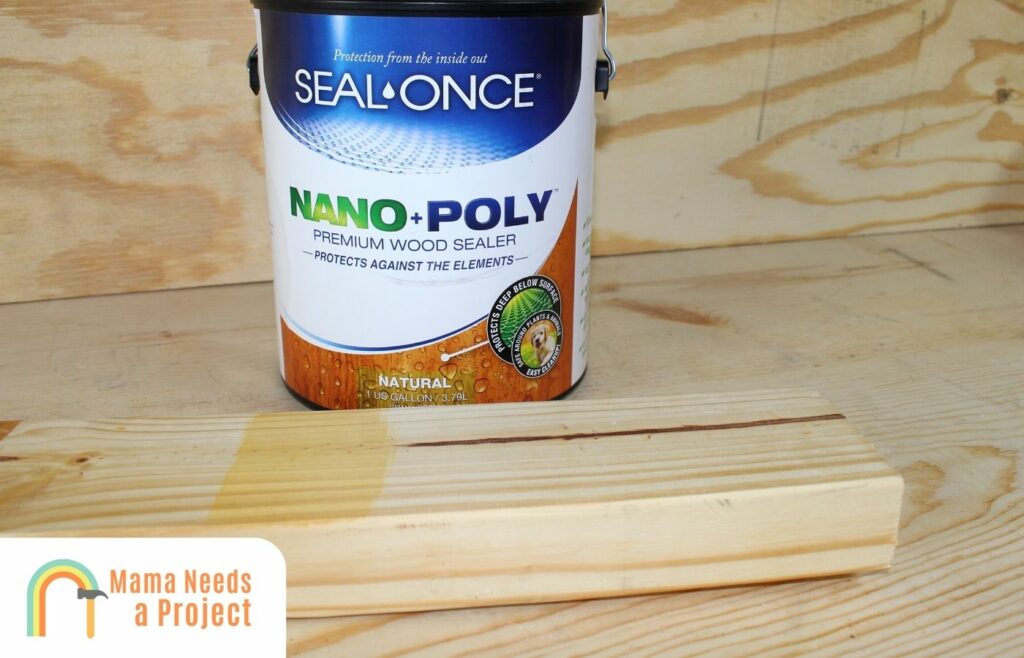
Using waterproof paint is another great method for waterproofing plywood.
Firstly, paint is almost always quick and easy to apply. And since most paints are applied the same way, with a paint roller, you can use the kind of paint you think is best.
Second, paint can add a splash of color to your project! If you don’t want pigments, you can go with white.
The best waterproof paints are latex paints and spray on latex can work too.
Paint will work well as a waterproofer for both indoor and outdoor projects – making it an easy method for waterproofing plywood sheets.
To apply latex paint, simply crack open the bucket, grab a paint roller, and get to work!
However, working with paint may add extra steps to the application process, namely priming and adding a topcoat.
These additional steps are not necessary but will certainly lengthen the lifespan and boost the appearance of your project.
Waterproof paint does have its downsides, however.
Mainly, paint will fade over time, and sometimes it can chip off.
A topcoat will make the paint last longer, but ultimately you will have to periodically touch up the paint.
If you don’t mind the extra maintenance, using waterproof paint is a great way to make plywood waterproof and add visual appeal!
3. Liquid Latex
Liquid latex is another extraordinarily popular material that contractors will use to seal plywood.
It’s conveniently available in a spray form, though there are liquid versions that you can brush onto your plywood.
Using liquid latex is a quick, easy, and reliable method for making plywood water resistant, as all you need to do is ensure adequate coverage when you’re spraying the plywood.
However, there are some downsides associated with using liquid latex.
For example, using liquid latex on a larger scale will not be cost-effective, as you’ll spend more on this than you’d spend on other sealing products.
You may also have difficulty judging how much is on the plywood, which could lead to either under or over-applying.
Despite its few downsides, liquid latex is still a widely-used material that you can easily pick up at any hardware store when you need to make plywood moisture resistant.
Below is an awesome video about using liquid latex to waterproof your plywood!
4. PVA Glue
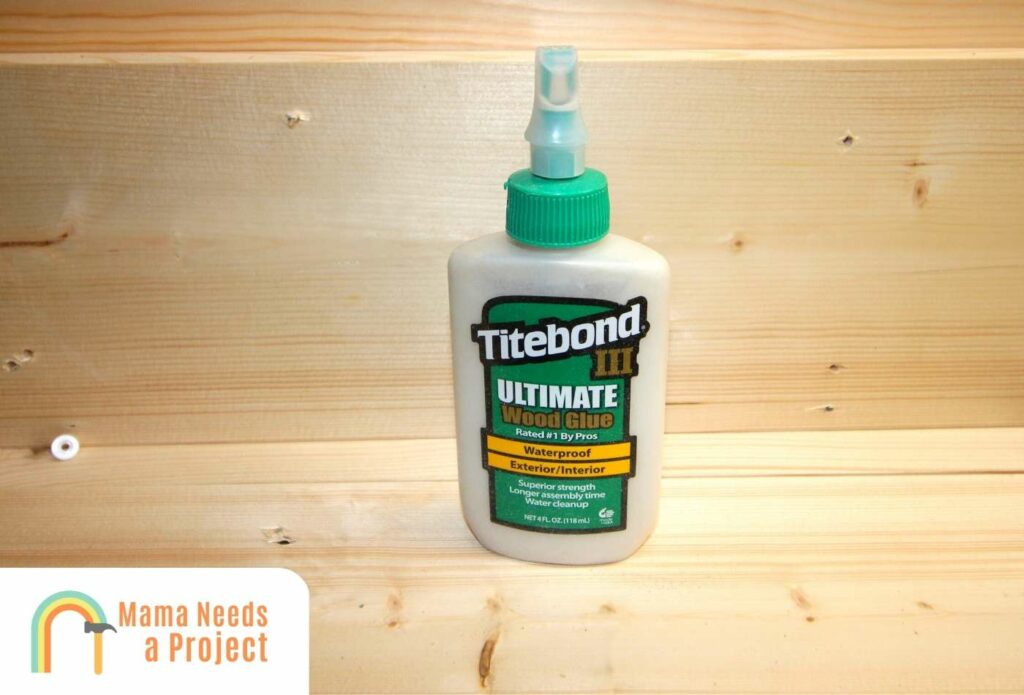
PVA glue is a non-traditional but widely-used waterproofing method.
PVA is a type of glue that manufacturers often use in bookbinding, as it’s both strong and delicate.
Moreover, PVA glue dries thin and it’s transparent, meaning you can hardly tell when it’s been applied.
If you’re using PVA glue, you may want to dilute it with water to ensure it dries thin and bonds easily with the plywood.
5. Varnish
You may think of varnish (or wood stain) as something that simply makes any type of wood look better.
In reality, a varnish is a type of thin resin that forms a hard, protective coating when cured.
When applying this resin, it’s important to wear proper protective gear, such as a respirator, gloves, and protective goggles.
Varnish is another material that is often used on boats, though it doesn’t hold up well when submerged for a prolonged period. That being said, on a boat deck, varnish looks amazing and is a great way to waterproof plywood.
One added benefit of using varnish is that it gives wood a rich, dark brown color, so it can even make lower quality wood look like rich, dark oak.
6. Epoxy Sealant
Epoxy resin is a popular material for many arts and crafts enthusiasts, but it is also a great material for a range of construction projects.
In fact, many contractors use epoxy sealer to seal plywood, and these days it’s one of the most popular materials for making plywood waterproof.
Epoxy sealant comes in many different forms, including spray and paint form.
However, many non-spray versions come in two varieties, and applying these is a little more complicated than using other sealing materials.
The non-spray versions are made of dust and liquid, and they need to be mixed properly to ensure a proper seal.
When using epoxy, pay careful attention to the “How to Apply” section on the product’s label.
If you mix up the ratio, the epoxy may become too runny or hard, and in either case application would be unnecessarily challenging.
Epoxy is also toxic. Therefore, when mixing and applying, it is best to wear proper protective gear.
It is vital to wear this safety gear when around epoxy until it cures, as breathing in the fumes of uncured epoxy can be dangerous and cause respiratory illness.
While it seems like a lot of downsides are associated with using epoxy resin, using this material is worth it overall, as it’s a high-quality sealant that’s very effective when used properly.
Epoxy resin is clear unless you decide to mix in certain dyes to add color.
Its clear color means you can apply it and still keep the natural beauty of your wood’s grain.
Additionally, epoxy resin is notably thick and hard when fully cured, meaning it won’t just protect against water but general damage as well.
Epoxy resin is often used during the construction of boats. And if this material is reliable enough to keep parts of boats waterproof, it should be able to protect your plywood from the rain.
7. Use a Drying Oil
There are several oils you can use to create water resistant plywood.
Because oil does not mix with water, the oil surface of the plywood will prevent water from penetrating the wood.
While these oils may not be quite as effective as the other materials on this list, they’re still a good option if you’re looking for a way to waterproof your plywood that’s less harsh.
Tung oil is one of the most popular oils for waterproofing wood that has been used for decades.
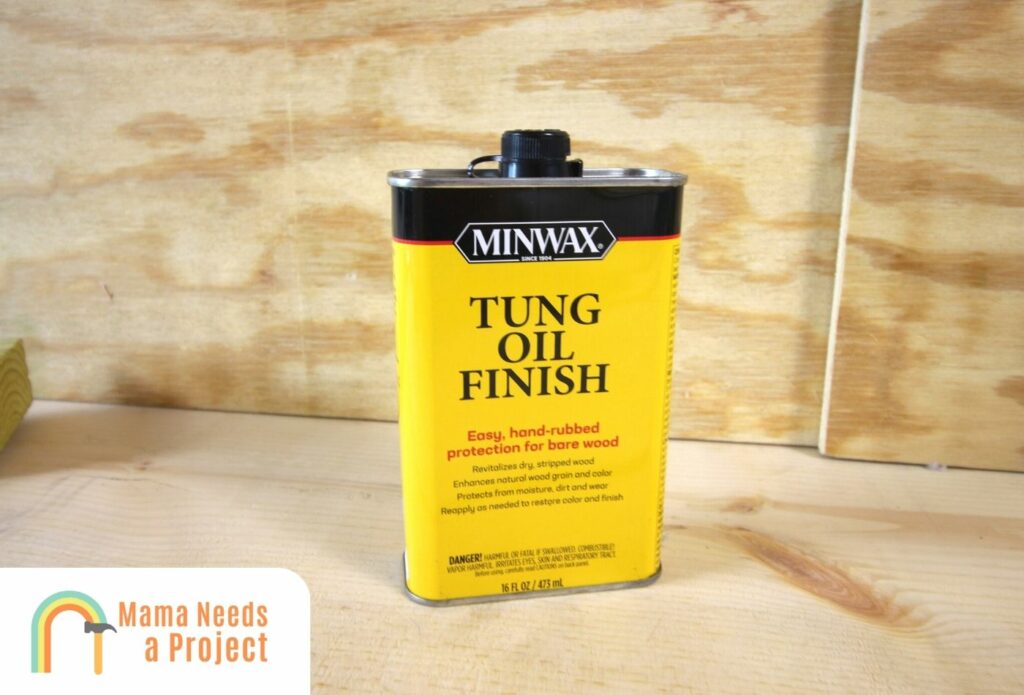
Just wipe a thin coat of oil across the plywood and let it dry.
You can apply as many coats as you want until the wood is saturated but be sure to let each coat dry completely before applying the next.
Ultimately, drying oils aren’t quite as durable as some of the other methods listed, but it can be a simple way to add water resistance to your wood without much effort.
How To Waterproof Plywood
You have read plenty about why waterproofing plywood is often a good move, and you know which waterproofing materials can help the most when you need to seal plywood.
The process of waterproofing plywood is quite simple, and anybody who knows how to use tools safely can properly seal plywood.
The only issue that comes with waterproofing plywood is that it can take some time to accomplish.
After all, you’ll be using waterproofing material on the multiple layers, which means the overall process for sealing the plywood can take at least a few hours
But if you have the time and the ability to safely waterproof plywood, doing so can be very beneficial, improving the quality of the finished product.
Once you know how to waterproof plywood, you can create plywood for outdoor use, and it may be so water-resistant that it acts as marine grade plywood.
1. Clean Off Plywood
The first step in waterproofing your plywood is cleaning it off and removing any debris. This will ensure there is no leftover debris that will prevent the waterproofing process.
First, wipe down your boards with a dry cloth. If there is leftover mud or debris, you can use a damp rag with soap and warm water – just be sure not to drench the plywood and let it dry completely before moving on to the next step.
2. Apply Wood Filler To Holes & Knots
Despite plywood’s durability, a lot of people don’t like this material because it has lots of holes, dents, and knots.
These imperfections can create an uneven surface, and sealing agents have a hard time bonding to such surfaces, which is why wood in its natural form sometimes looks awful sealed.
In the case of knots, the warping in the wood could even cause holes that go straight through the plywood—or at least a single layer of it.
This is where wood filler comes in. Wood filler, which you can find in nearly any hardware store, can be applied to most imperfections to create a more solid and stable plywood surface.
Luckily, wood filler dries fast (in as little as thirty minutes), though letting it dry for a full hour won’t hurt.
Once you have verified that your wood filler has dried, you can move on to the next step!
3. Sand Down The Plywood Edges
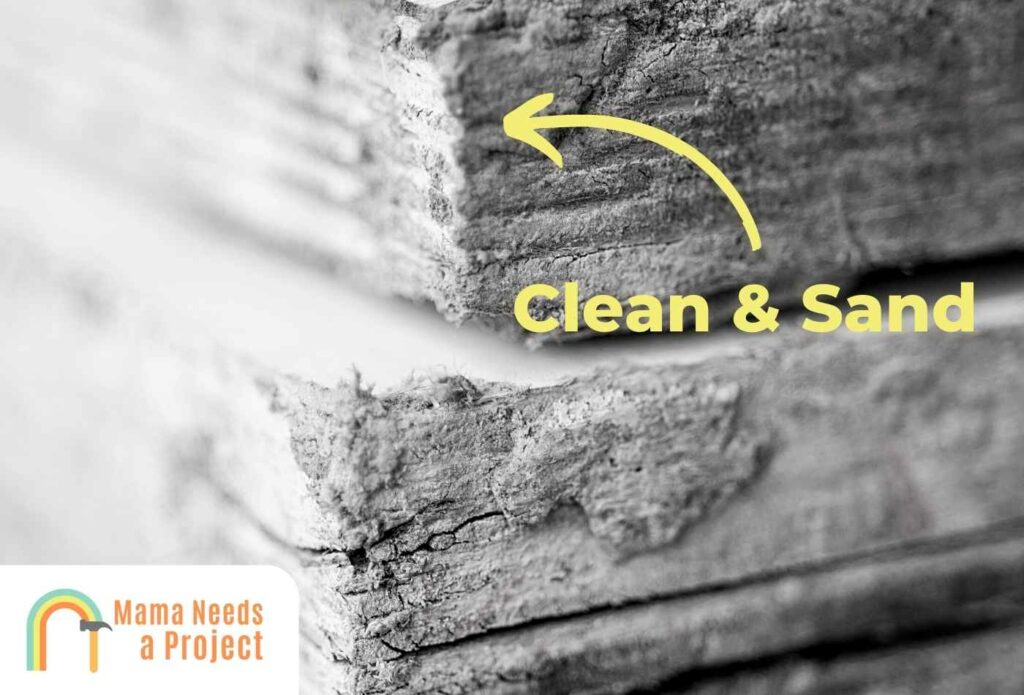
As you know, plywood often doesn’t have a smooth surface, but you can improve the surface of plywood by properly using wood filler and sanding.
First, lightly sand the surface of the plywood. Sanding down the surface of the plywood will keep it even, buffing out any imperfections. Sanding will also help sealing agents bond with the plywood.
Be careful not to sand through your plywood’s veneer layer, especially if you’re using a transparent finish like varnish, PVA glue, or epoxy as it will create an uneven appearance, though you can rectify this by painting over it.
You can use a medium grit sandpaper over the entire surface of your plywood to gently smooth it out.
4. Apply Optional Priming Or Staining
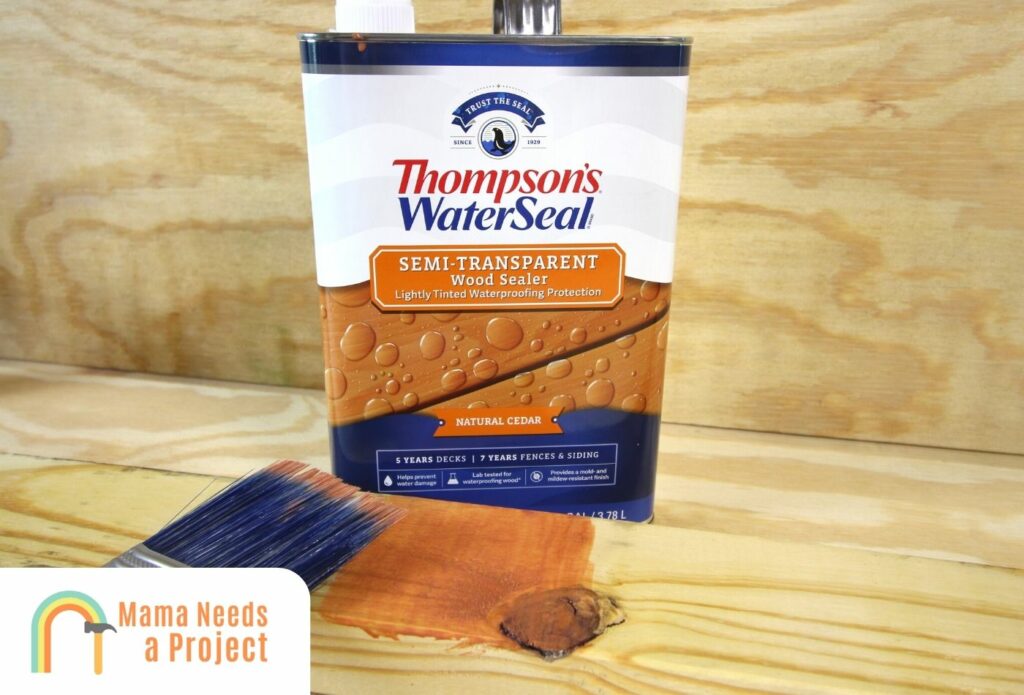
If you are using paint, you should apply primer beforehand so you can use fewer layers of paint. This will also ensure the paint doesn’t bleed through the grain.
Keep in mind that using a bonding primer will eliminate the need to sand down your wood in the first place.
And if you’re using a transparent finish like epoxy or PVA glue, consider using a wood stain first. Staining the plywood will give it a darker, richer color, much like adding a varnish.
5. Apply Your Waterproofing Method
Once you have selected your method for sealing plywood, now is the time to use it!
If you have selected epoxy resin, make sure to mix the epoxy properly before using it, and always remember to wear proper protective gear!
Remember that different waterproofing methods will have different requirements. Take epoxy, for example; it’s thick, so it’ll have to be thinned somewhat before it can be applied.
One of the most important steps is to ensure you seal the plywood edges as these can some of the most vulnerable spots.
Paint and certain varnishes, like polyurethane varnish, will need to be applied with a paintbrush or a roller.
Always consider the needs of your waterproofing material before applying it, as you’ll probably only have one chance to get things right.
6. Let It Dry & Reapply
The hardest part of waterproofing plywood is waiting for the waterproofing layer to dry.
Depending on the material you use, it could take anywhere from several hours to several days for the seal to dry, so you will have to be patient.
If the material is the kind that requires several coats, such as paint, you’ll be waiting longer for a water proof seal to take hold.
Check out my guide to learn if spray paint is waterproof and how to use it on wood!
Is Plywood Waterproof?
Since plywood is made of durable layer after layer, it can hold a pretty sizable weight. Still, it can get weakened over time, especially by moisture.
Plywood is not naturally waterproof, but it is somewhat water resistant.
Specifically, you could briefly spray a plywood sheet with a hose or dip it into some water and there won’t be any adverse effects. However, you cannot leave plywood submerged in water for a prolonged period.
Plywood can handle brief exposure to water, and more so than some other kinds of wood.
However, prolonged exposure to moisture can be quite harmful to plywood, causing it to warp and rot like any other piece of wood.
So in the end, plywood may be somewhat naturally water resistant, but it’s certainly not impenetrable by water.
But even though plywood is not naturally waterproof, there are many things you can do to strengthen plywood and make it more resistant to moisture!
If you don’t want to bother with waterproofing plywood, you can try some of these plywood alternatives that are better suited to deal with moisture!
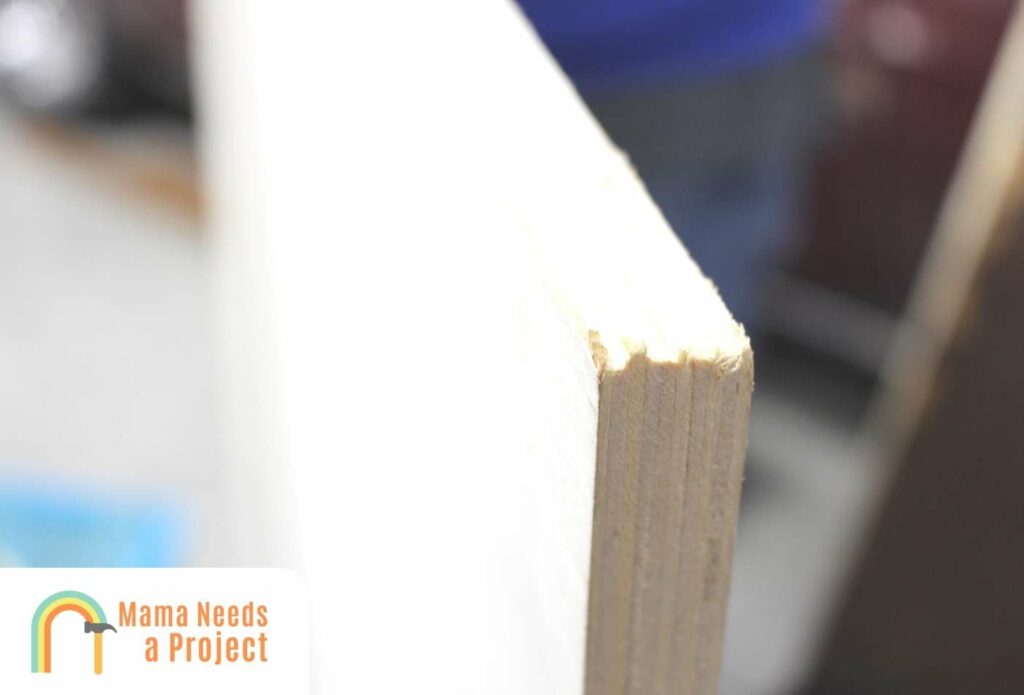
Can You Waterproof Plywood?
Yes, you can waterproof plywood!
In fact, this isn’t all that hard to do, and there are many methods that accomplish this end.
The texture of its finish, among other factors, is a significant reason why a sheet of plywood will bond with a penetrating epoxy sealant and paints.
While plywood sheets may seem very smooth, they are still wood, meaning they do have imperfections.
Plywood has microscopic pores, and these pores help the plywood boards bond with waterproofing materials.
Plywood is notably easy to waterproof, and it seals so well that builders can utilize plywood for outdoor and sometimes even marine use!
It’s easy to seal plywood, and doing so will make the surface of the plywood even more durable!
If you’re ready to waterproof your plywood, check out these best plywood primers!
Why Should You Waterproof Plywood?
Below are a few reasons you should completely waterproof plywood.
Waterproofing Prevents Warping
It is a simple fact of life that wood warps; specifically, it expands because of temperature fluctuations and exposure to moisture.
Plywood does this, 2x4s do this, and wooden furniture does this as well!
If you’ve ever tried to open a natural wood door during a humid summer, it’s likely you’ll encounter some resistance, and expansion of the door (due to heat and humidity) is likely to be the reason why.
Unfortunately, real wood is not the only kind of wood that warps under prolonged humidity; plywood and other wood products, like fiberboard, also warp when it’s both humid and hot.
However, plywood is more resistant to warping than other wood products because of its composite nature.
By sealing plywood, you can minimize, if not outright prevent, your plywood sheets from warping and being damaged.
A strong waterproofing agent will add a protective layer, which causes water to simply roll off the plywood edges after making contact.
Many of these sealants are particularly powerful, and when combined with the natural durability of plywood they can make plywood stronger than ever.
While submerging an untreated plywood sheet could make it warp, a sealed, marine grade plywood sheet could be used in the construction of boats, which are almost always submerged.
If your plywood-based project is going to spend a lot of time outside, you should seal it. Doing so will turn standard-grade plywood into exterior plywood.
Waterproofing Prevents Wood Rot
Unfortunately, all kinds of wood rot. This is because wood, like most other natural materials, decay over time.
Wood’s decaying process can be expedited by excessive humidity and poor ventilation. Fungus can also make wood rot quicker.
But like with other biological materials, there are ways to slow or outright stop the natural decaying process.
Whether we’re talking about solid wood, plywood, or fiberboard, you can protect wood-based materials from rot by sealing them.
Waterproofing plywood not only protects it from outside humidity but from fungal growth as well. Sealing plywood protects it from the conditions which often lead to dry rot.
In the end, you should waterproof plywood for both indoor and outdoor projects, as doing so will not only prevent warping but rotting as well!
Waterproofing Prolongs Wood’s Lifespan
The lifespan for untreated outdoor wood is about two years.
Untreated plywood, however, may not last as long because this material is water resistant but not waterproof.
If untreated plywood is exposed to excessive humidity, rain, or other extreme outdoor conditions, it could fall into trouble.
These troubles include warping, rotting, and infestations of pests like termites and worms.
But none of these will be a problem if you use a proven waterproofing strategy.
Waterproofing will protect plywood whether it’s used indoors or outdoors, which in part explains why the majority of plywood structures today are waterproofed.
Should a pipe in your home spring a leak, or your faucet breaks and won’t shut off, the excess water could destroy plywood in your home if it hasn’t been sealed properly.
If you protect your plywood by applying a waterproofing material, you won’t have to worry as much about it getting damaged, and you won’t have to constantly spend on replacement materials.
The lifespan for a properly-treated plywood board can be anywhere from 20 to 40 years.
Therefore, if you take good care of the plywood you have, you won’t have to spend a lot of time and money replacing damaged plywood!
In short, you can lengthen the lifespans of both indoor and outdoor projects by waterproofing plywood!

How to Seal Plywood Edges
When it comes to the edges of plywood, you’ll have to decide whether you want to cover them or not.
If you want to seal your plywood for outdoor use – ensuring the edges are properly sealed is just as important as the surface.
This is because moisture can more easily penetrate unsealed edges, leading to rot and other damage.
You can use many of the same materials to seal plywood for outdoor use, it just might take some additional time and work.
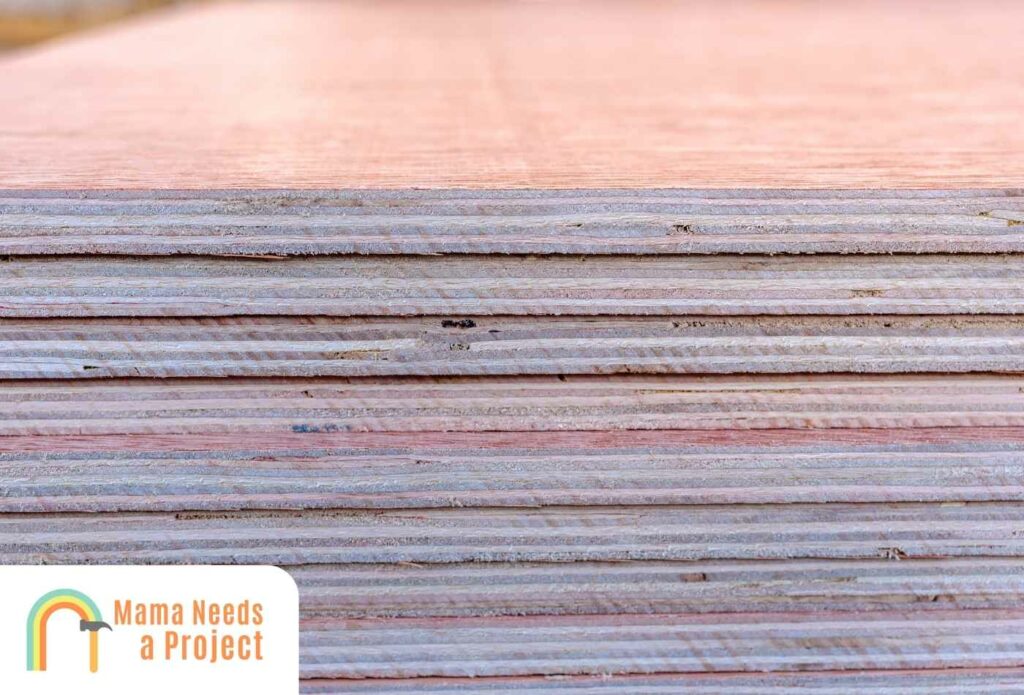
Frequently Asked Questions
Is Plywood Water Resistant?
On its own, plywood is not water resistant. However, you can make plywood water resistant by properly sealing it with the right materials.
Is Exterior Grade Plywood Water Resistant?
Depending on the type of plywood you purchase, it may come pre-sealed or treated.
However, even if you do purchase exterior grade plywood, it’s still a good idea to apply a waterproof sealant to ensure it lasts as long as possible.
Can You Use Flex Seal On Plywood?
Yes, you can use Flex Seal to waterproof plywood. However, you should always test the product on a small area first to make sure it doesn’t damage the wood.
Can You Use Plywood Outdoors?
While plywood can certainly be used outdoors, you’ll want to water proof it first to ensure it lasts as long as possible.
Applying a sealant is especially important if you’re using plywood for something like siding or a patio.
Final Thoughts on How to Make Plywood Waterproof
Waterproofing plywood is an integral part of many construction and DIY projects.
Waterproofing plywood can protect your construction projects from warping and rotting which are caused by excess moisture, heat, and lack of ventilation.
There are many different materials one can use to make plywood waterproof, including liquid latex and an epoxy sealer.
The process of waterproofing plywood is surprisingly simple and can be completed within a day from start to finish.

